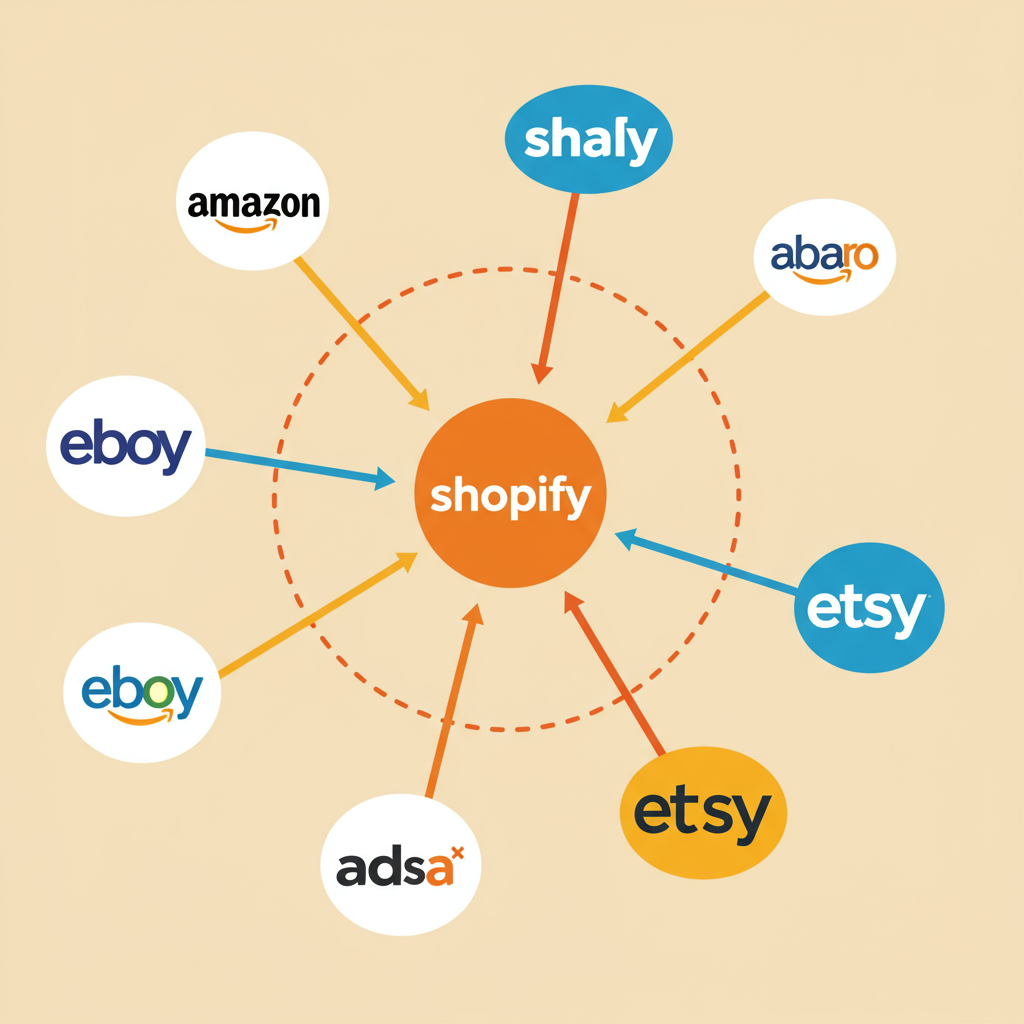Unlocking New Sales Channels and Streamlining Your eCommerce Operations
As a Shopify merchant, I’m always looking for ways to expand my reach and grow my business.
One of the most powerful strategies I’ve discovered is integrating my Shopify store with various online marketplaces.
This approach has truly transformed how I think about sales channels and customer acquisition.
So, what exactly do I mean by “Shopify marketplace integration”?
Simply put, it’s the process of connecting your Shopify store’s product catalog, inventory, and order management system directly with external online marketplaces.
Think of giants like Amazon, eBay, Etsy, or even Walmart.
Instead of managing separate listings and inventory on each platform, integration allows for a centralized approach.
For me, the benefits of this integration have been immense and immediately noticeable.
Firstly, it dramatically increases my brand’s visibility. Marketplaces already have millions of active shoppers.
Tapping into this existing traffic means I don’t have to spend as much on acquiring new customers through my own marketing efforts.
Secondly, it diversifies my sales channels. Relying solely on my Shopify store can be risky; having multiple streams of income provides stability.
If one channel experiences a dip, others can pick up the slack, ensuring a more consistent revenue flow.
Thirdly, and perhaps most importantly for operational efficiency, it streamlines my inventory and order management.
With proper integration, when a product sells on Amazon, my Shopify inventory automatically updates, preventing overselling.
Similarly, orders placed on a marketplace can be pulled directly into my Shopify admin, simplifying fulfillment.
This automation saves me countless hours of manual data entry and reduces the potential for human error.
It also allows me to reach new customer segments that might not actively search for products on independent brand websites.
Many shoppers prefer the convenience and trust associated with major marketplaces.
So, how do I actually go about integrating my Shopify store with these marketplaces?
The most common and accessible method for merchants like us is through dedicated Shopify apps.
These apps act as bridges, facilitating the data flow between your Shopify store and the chosen marketplace.
There are apps specifically designed for Amazon, eBay, Etsy, and multi-channel solutions that cover several platforms.
When I choose an app, I look for features like real-time inventory synchronization, bulk product listing, and automated order import.
Another method, though less common for small to medium businesses, involves custom API development.
This is usually reserved for very large enterprises with unique, complex integration needs and significant development budgets.
Manual uploads are also an option, but I strongly advise against them for anything more than a handful of products.
They are incredibly time-consuming, prone to errors, and simply not scalable as your product catalog grows.
Before diving in, I always consider a few key challenges and considerations.
Inventory synchronization is paramount. Nothing frustrates a customer more than ordering an item that’s out of stock.
Ensuring that my stock levels are accurate across all channels, in real-time, is my top priority.
Product data mapping is another crucial step. Marketplaces often have specific requirements for product titles, descriptions, and attributes.
I need to ensure my Shopify product data can be correctly translated and mapped to meet these marketplace standards.
Pricing strategy also needs careful thought. Competition on marketplaces can be fierce, and I might need to adjust my pricing or offer bundles.
Shipping and fulfillment processes must be aligned. Whether I use Fulfillment by Amazon (FBA) or fulfill orders myself, the integration needs to support my chosen method.
Customer service and returns policies also vary by marketplace, and I need to be prepared to adhere to their guidelines.
Finally, I always factor in the costs: marketplace commissions, app subscription fees, and any transaction charges.
These can add up, so it’s essential to calculate my potential profit margins accurately.
My general process for integrating usually follows a few steps.
First, I research and select the marketplace that best fits my products and target audience.
Then, I choose the appropriate Shopify integration app and install it.
Next, I configure the app, connecting it to my marketplace seller account.
This is where I map my Shopify products to the marketplace categories and ensure all data fields are correctly aligned.
Once the initial setup is complete, I initiate the product listing synchronization.
I then closely monitor the inventory sync to ensure everything is working as expected.
As orders start coming in, I manage them directly from my Shopify admin, leveraging the integration’s automation.
Regularly reviewing performance metrics, like sales volume and conversion rates on each marketplace, helps me refine my strategy.
What do you think about this article so far? Is this information helpful for your business?
My best advice for any merchant considering this is to start small.
Don’t try to integrate with five marketplaces at once. Pick one, master it, and then expand.
Optimize your product listings specifically for each marketplace’s search algorithm.
High-quality images and compelling descriptions are non-negotiable.
Provide exceptional customer service, as marketplace reviews significantly impact your visibility and sales.
Automate as much as possible to free up your time for growth-oriented tasks.
Regularly review your integration settings and app performance to ensure everything is running smoothly.
In conclusion, integrating your Shopify store with online marketplaces is a strategic move that can unlock significant growth.
It’s about expanding your reach, diversifying your revenue, and streamlining your operations.
While there are considerations, the benefits of tapping into vast existing customer bases are undeniable.
I encourage you to explore this powerful avenue for your Shopify business.






